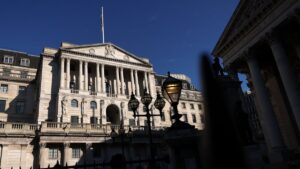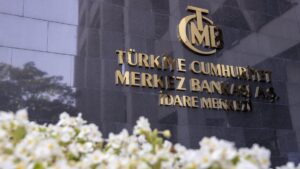Israel’s economic growth slowed to 1% in 2024, according to an initial estimate on Monday, with its war on Gaza taking a toll on investment and exports.
It marked a slowdown from 1.8% in 2023 but exceeded the Bank of Israel’s estimate of 0.6%, the Central Bureau of Statistics said.
Israel’s military campaigns in Gaza and Lebanon meant a roller coaster year for the economy.
Israel’s genocidal attacks on Gaza, which have killed over 46,000 people, mostly women and children, were in retaliation for the Palestinian resistance group Hamas’ cross-border attack on southern Israel in October 2023. A cease-fire came into effect on Jan. 19 this year. The war expanded to Lebanon until a cease-fire on Nov. 27.
Oz Shimoni, head of the bureau’s macroeconomics division, said there was no single item that influenced growth data in 2024.
“It was many components,” he told Reuters. But “The 1% increase is only because of government expenses.”
Growth suffered partly due to a smaller workforce since tens of thousands of residents were called up for reserve military service. The bureau separately said the jobless rate slipped to 2.6% in January from 2.7% in December.
The business sector, which excludes government spending, fell 0.6%. On a per capita basis, GDP fell 0.3% to around $40,000 – compared with gains of 2.1% in the United States and 0.6% in the U.K. and Italy.
For the fourth quarter, GDP grew by an annualized 2.5%, according to the preliminary estimate, well below a 5.7% rise projected in a Reuters poll. On a per capita basis, GDP gained 1.5% in the quarter.
Inflation up
The weak growth data comes after the bureau on Friday reported that the annual inflation rate jumped to 3.8% in January from 3.2% in December, a figure that will continue to prevent the Bank of Israel from lowering short-term interest rates any time soon.
Policymakers have said they hope they can reduce rates later in 2025 should inflation ease.
Israel’s see-sawing economy saw a sharp contraction in the fourth quarter of 2023, when the war began.
The economy rebounded to an annualized 15.6% rate of growth in the first three months of 2024 before shrinking 0.8% in the subsequent three months and returning to growth in the final half of the year.
Across 2024, government spending led growth with a 13.7% rise, while consumer spending rose 3.9%. Investment in fixed assets fell 5.9% and exports dipped 5.6%.
In the fourth quarter, most major components of GDP rose.




















































Be First to Comment